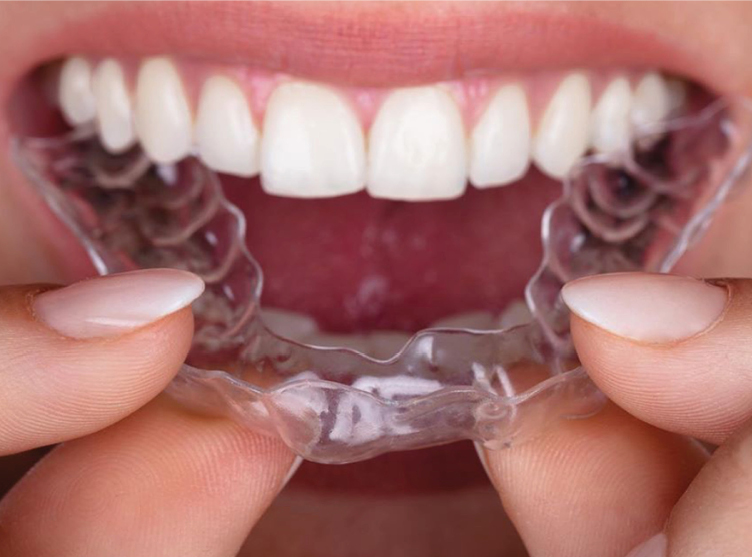
Gone are the days when traditional metal braces were the only option available when it comes to orthodontic treatment. Nowadays there are several different options out there for those looking to straighten their teeth, and one of those options is Invisalign®. Here’s everything you need to know!
What is Invisalign®?
The Invisalign® treatment uses a series of clear aligners, or thin plastic trays, that apply a constant force to a person’s teeth to gradually move them into place. They are changed every one to two weeks depending on the treatment.
They look a little like a traditional mouthguard, made of a thin, lightweight, clear plastic. The aligners are worn day and night but can be removed when eating, flossing or cleaning your teeth. As each aligner is worn and changed, they move the teeth gradually until the required result is achieved.
If you choose Invisalign®, you’ll wear teeth aligners for a period ranging from one to two years, depending on the type of correction your smile requires.
What are the benefits?
Many adults who have bite problems or crooked teeth refrain from having their teeth straightened simply because they don’t want to constantly wear noticeable metal braces. This isn’t an issue with Invisalign® as they are nearly invisible, making them almost undetectable.
Another advantage is that the aligners can be removed for brief periods. While you are required to wear the aligners for a minimum of 22 hours a day, it is acceptable to remove them for a maximum of two hours a day – perfect for special occasions, big presentations, or when you want to eat and drink. This also means that you can brush and floss as normal, keeping up with your regular oral hygiene routine. The truth is that it’s difficult to brush and floss around braces. It’s awkward to weave in and out the tangle of wires to keep up with cleaning.
Are there any downsides?
One of the attractions of choosing Invisalign® for some people is the flexibility it offers in terms of being able to remove them as you please. However, for others this is seen as a downside, as it requires you to be vigilant and disciplined with how long you wear them. It is also possible for aligners to be misplaced once removed. Our advice is to pay attention, and keep an eye on them as much as you would your mobile phone and always keep them in the Invisalign® case.
Some wearers also report developing a slight lisp, especially at the beginning of their treatment. Rest assured it does improve when you get used to wearing your aligners.
Who is suitable for Invisalign®?
The ideal Invisalign® candidate is dedicated to fix their smile. Dedication is important, as you are in control of the length of time you wear your aligners and may need to wear a retainer after treatment. Often these retainers are only worn while you sleep. If your doctor recommends wearing a retainer, neglecting to do so may reverse the effects of your treatment. Therefore, even patients who have completed Invisalign® treatment should be committed to follow-up care.
If you’ve been considering the clear alternative to braces, Invisalign®, please don’t hesitate to get in touch. We offer an assessment for anyone looking to explore Invisalign® as an option, and can answer any questions or queries you may have about treatment.